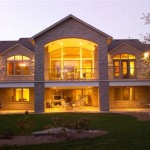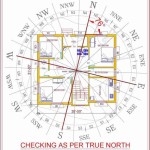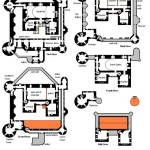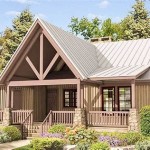Essential Aspects of Subterranean House Plans
If you're looking for a house that offers privacy, protection from the elements, and potential energy savings, then a subterranean house plan may be the perfect option for you. Subterranean houses are built underground, with the roof of the house at or below ground level. This type of house has many advantages over traditional above-ground homes, making it a popular choice for many homeowners.
Advantages of Subterranean House Plans
There are many advantages to building a subterranean house. Some of the most notable benefits include:
- Privacy: Subterranean houses are very private, as they are not visible from the street or from neighboring properties. This makes them ideal for people who value their privacy.
- Protection from the elements: Subterranean houses are well-protected from the elements, such as wind, rain, and snow. The earth around the house helps to insulate the home and keep it at a comfortable temperature.
- Energy efficiency: Subterranean houses are very energy-efficient, as the earth around the house helps to regulate the temperature. This can lead to significant savings on energy bills.
- Natural light: Subterranean houses can be designed to allow for plenty of natural light. This can help to create a bright and cheerful living space.
- Unique design: Subterranean houses offer a unique and interesting design that can set your home apart from the rest.
Essential Aspects of Subterranean House Plans
When designing a subterranean house plan, there are certain essential aspects that need to be considered. These include:
- Site selection: The site you choose for your subterranean house is very important. It should be a site that is well-drained and has a stable soil base.
- Foundation: The foundation of your subterranean house must be strong and stable. It should be built to withstand the weight of the earth and the house itself.
- Drainage: Drainage is very important for subterranean houses. The ground around the house must be properly drained to prevent water from seeping into the house.
- Ventilation: Subterranean houses need to be properly ventilated to prevent moisture from building up inside the house. This can be done through the use of vents, fans, and other ventilation systems.
- Lighting: Subterranean houses can be designed to allow for plenty of natural light. However, artificial lighting will also be necessary.
- Energy efficiency: Subterranean houses can be very energy-efficient. However, it is important to use energy-efficient appliances and fixtures to maximize energy savings.
Conclusion
Subterranean house plans offer many advantages over traditional above-ground homes. They are private, protected from the elements, and energy-efficient. However, it is important to carefully consider the essential aspects of subterranean house plans before you begin construction. By doing so, you can ensure that your subterranean house is a comfortable and enjoyable place to live.

An Underground House Alaska Science Forum Homes Earth Sheltered

Underground Home Plans And Designs Natural Security Shelters

Scottish Architect Underground House Plans Homes Home Design

26 Luxury Hiline Home Plans Underground Homes House Earth Sheltered

How To Build An Underground House

Beautiful Underground House Design In Switzerland 15 Pics Kerala Home And Floor Plans 9k Dream Houses

Sustainable Style 12 Contemporary Green Home Designs Webecoist Underground Homes House Design Architecture

Earth Sheltered Home Plans House Floor And Design

Small Underground House Shelter Tinyhousedesign

Earth Sheltered Home Plans House Floor And Design








